

Tao Te Ching

Zen (禅) Lineage
Zen epitomizes our themes of “non-thought lineage,” “wisdom beyond words,” and understanding the true sense buried beneath mountains of concept, philosophy, cultural and religious belief. Tracing its root back to the Buddha’s Flower Sermon given without words and transmitted to Mahākāśyapa, the Zen lineage weaves through the Vajrayana of India and Tibet, the Chan Buddhism of China, the Zen of Japan, and into the secular Buddhism of today that’s become the fastest growing spiritual tradition in the West. Scholars consider many origins of this tradition to a blending of the more pedantic Indian Buddhism with the more wild and open influence of Lao Tzu .
People (63)
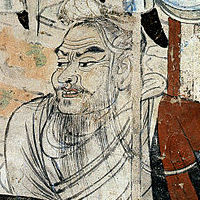
Vimalkirti विमल
600 – 500 BCE
Close disciple of the Buddha who extended his teachings to common people
One of the Buddha’s closest and most important disciples, Vimalkirti became known for his wisdom and ability to teach Dharma to not only monastics but to everyday, common people. Like the Buddha and born into a wealthy family, he also renounced his position and possessions but his teaching and influence extended back to people not willing to renounce so much. This helped shape the Buddhist traditions into welcoming everyone. Although sometimes considered legendary, teachings attributed to him on emptiness became a central theme in Buddhist philosophy and most traditions consider him an historical figure and a founding influence on the Chan and Zen traditions.

Buddha गौतम बुद्ध (Siddhartha Shakyamuni Gautama)
563 – 483 BCE
Awakened Truth
While living at about the same time as Lao Tzu, the Buddha was more of a traditional teacher. His teachings, often called Buddha Dharma (“Awakened Truth”) extend and adapt to people in all walks of life: monks, householders, wandering yogis, kings and secular leaders of all kinds. Born into luxury and privilege, Siddhartha realized the meaninglessness of pleasure-seeking, fame, fortune, power and set off on a spiritual quest leading him to the deepest realization and insight. He cautioned against belief systems, herd instinct, and uncritically following leaders, philosophies, and religions.
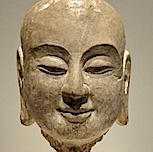
Ananda 阿難
5th C. BCE
"Guardian of the Dharma"
First cousin, close attendant and heart disciple of Gautama Buddha, 2nd Patriarch in the Zen lineage, known as “Guardian of the Dharma” because of his memory and recording of the sutras into the Pāli Canon during the First Buddhist council; Ananda is said to have been the most emotionally closest to the Buddha but the last of his close disciples to become enlightened. Known for his kindness, unselfish thoughtfulness, and service for others; he was responsible for including women in the monastic order and the Buddha’s public recognition of women being equal to men for which he was criticized after the Buddha died.
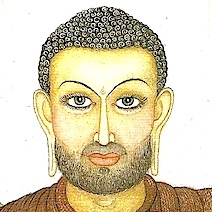
Mahākāśyapa 摩訶迦葉
5th C BCE
One of the Buddha’s principal disciples, Mahākāśyapa convened and directed the First Buddhist council and was the only one said to have understood the “Flower Sutra” - a teaching the Buddha gave by holding up a white flower and not using any words. Zen Buddhism traces its origin to this deep example of understanding the sense, not just the words. All true wisdom traditions seem to share this concentration on meditative direct experience rather than philosophy, rational creeds, or revealed scripture.

Ashoka
304 – 232 BCE
One of the world's most enlightened leaders
One of India’s greatest emperors, after witnessing the immense bloodshed during a war Ashoka became the first Buddhist leader and sent teachers as far away as Egypt, Greece, Nepal, China, Thailand and Viet Nam. He brought about a golden age for India, renounced violence and religious intolerance, built 84,000 monasteries, hospitals for people and animals, championed the environment, human rights and gender equality. He was the first ruler in human history to ban slavery, the death penalty, animal cruelty, and deforestation. H.G. Wells wrote that his reign, “was one of the brightest interludes in the troubled history of mankind.”

Upagupta ရှင်ဥပဂုတ္တ (Shin Upagutta)
c. 3rd century BCE
4th Zen Patriarch, disciple of the Buddha’s close attendant Ananda’s regent, the spiritual teacher of Ashoka who spread Buddhism from a very small community into the greater world; Upagupta is still remembered and venerated in many South East Asian countries, Bangladesh, and with a special, high status in Burma that celebrates a major festival in his honor each year. Immortalized in a poem by Rabindranath Tagore, he refuses the advances of his city’s most famous enchantress when she’s young and beautiful only to nurse and stay with her when she’s suffering from a disfiguring disease.

Nagarjuna नागर्जुन
c. 150-250 CE
Considered the most important Buddhist philosopher after the historical Buddha, Nāgārjuna founded the “middle way” Madhyamaka school, developed the Prajñāpāramitā sūtras, the concept of śūnyatā, or "emptiness," the ultimate and relative “Two Truths.” He also served as the head of Nālandā University and as the "father of iatrochemistry" practiced Ayurveda medicine. An important factor in Buddhism’s spread to Tibet, China, Japan and other Asian countries, his teachings represent the pinnacle of philosophical insight and wisdom.
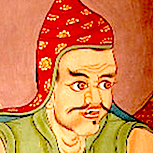
Āryadeva འཕགས་པ་ལྷ། (Kannadeva)
3rd C. CE
Born a king, Aryadeva became teacher to 1000 monks, a Mahasiddha, abbot of Nalanda University, disciple/teacher of Nagarjuna, 15th patriarch of Chan Buddhism, medicine doctor monk, and cofounder of the Mahayana school. One of “the six great commentators on the Buddha's teachings,” he wrote many important texts, exemplified in his path the progressive loss of a belief in a separate self, and remains a shining example of direct and complete realization.
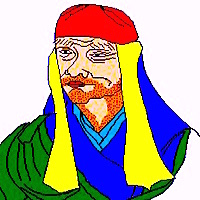
Kumārajīva कुमारजीव, 鸠摩罗什
344 – 413 CE
One of the world's greatest translators, the first to teach Nagarjuna’s Madhyamaka school in China, and symbol of early cultural cooperation; Kumārajīva supervised a team that translated the Diamond, the Lotus, the Prajñāpāramitā and more than 74 scriptures. This helped bridge the traditions of India, Central Asia, and China. With a non-sectarian and open mind, he focused on the sense rather than a literal translation and “revolutionized Chinese Buddhism.” His teaching became the Huayan or Flower Garland school, a foundation for the Chan (Zen) Buddhiist school as well as for the later revival of Taoism. The Emperor Yao Xing became his disciple and because of their work together, c. 90% of the Chinese population became Buddhists.

Vasubandhu 世親
4th to 5th C. CE
21st Zen Patriarch, poet, one of the most influential Indian Buddhist philosophers, and co-founder of the Yogacara school; Vasubandhu’s writings on Abhidharma are still widely studied as a major foundation of Mahayana teachings. The Second Patriarch of the most popular branch of Buddhism in Japan, the Jōdo Shinshū school that claims 20% of Japan’s population today; he pioneered the “Mind Only” tradition, the beginnings of Dzogchen, formal logic, and the non-dual nature of reality. These teachings seeped into Western philosophy through people like Immanuel Kant and George Berkeley.

Tao Yuanming
365 – 427 CE
Greatest Chinese poet during the Six Dynasties period (220 - 589 CE), one of the biggest poetic influences on Zen and Beat poetry, and in a small group of history’s best poets; stories say Tao Yuanming drained rivers of wine with friends in glades on moonlit nights celebrating the miracle and wonder of moment-to-moment perception. Military/government career drop out, back-to-the-land champion, discoverer of Peach Blossom Spring; he didn’t follow in the steps of any religion, didn’t do any of the recommended practices; he reveled in the fulness of here-and-now working in his garden, reading books, playing the zither, chopping wood and carrying water.

Bodhidharma 菩提達磨 (Daruma)
5th-6th C. CE
28th Zen Patriarch and first Chinese patriarch, the Indian prince Bodhidharma brought Chan Buddhism from India to China and began the Shaolin Kung Fu tradition founding the Shaolin Monastery. Known as "The Blue-Eyed Barbarian,” his direct authenticity confounded and impressed everyone from the emperor to famous teachers to peasants. He directly taught the wisdom beyond words, mind-to-mind and heart-to-heart transmission. In Japanese legend, he also traveled to Japan and met Prince Shotoku who then became the first great patron of Buddhism there.
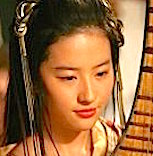
Arya Prajnadhara
5th century CE
27th Zen Patriarch, one of the few women Zen lineage leaders, and teacher of Bodhidharma; details about Arya Prajnadhara’s life are rare and difficult to find. Because of being a woman Patriarch in this predominantly male tradition and because of encouraging Arya Bodhidharma’s travels to China; although being almost completely unremembered by history, she had a huge influence on the evolution of Buddhism. Since her main disciple moved to China and Chán Buddhism mixed with Taoism, this influence in India diverted into the Maha Siddha tradition, spread to Tibet as Vajrayana, and reunited with Chán as Maha Ati or Dzogchen.

Dazu Huike (Dz Huk)
487 – 593 CE
Student of and lineage holder after Bodhidharma, 29th Zen Patriarch, 2nd Chinese Patriarch of Chan, insightful scholar of both Taoism, Buddhism, and ancient Chinese texts; Huike received the title Dazu (“Great Ancestor”) from the Tang emperor De Zong. To choose a successor when Bodhidharma planned to return to India, he asked his disciples to express their realization. Each gave poetic answers but Huike only stood silently invoking Bodhidharma’s observation, “You have attained my marrow.” Hike’s teachings diverted from the Indian tradition of a gradual path and emphasized sudden enlightenment, realization through meditation rather than study, and practice free from any gaining ideas or dualism.

Jianzhi Sengcan 鑑智僧璨 (Jiànzhì Sēngcàn)
529 – 606 CE
The Third Chinese Patriarch after Bodhidharma and thirtieth Patriarch after the Buddha, Sengcan wrote famous Chinese poems called Xinxin Ming. Because of a Buddhist persecution of the time, he went into hiding in the mountains and later wandered without a home for 10 years. He taught the elimination of all duality, going beyond words to the sense, and the contemplation of wisdom. Hsin Hsin Ming
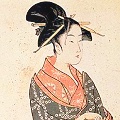
Empress Suiko 推古天皇 (Suiko-tennō)
554 – 628 CE
Emperor’s daughter, Buddhist nun, first and only confirmed Japanese Empress Regnant of Japan; Suiko’s many achievements include adopting a more useful calendar cycle, the 17-article constitution (written by Shotoku), and the official recognition of Buddhism by the issuance of the Flourishing Three Treasures Edict in 594. She was one of the first Buddhist monarchs in Japan, sponsored Buddhist temples and monasteries, and firmly established Buddhism in Japan. She orchestrated China’s first diplomatic recognition of Japan and close cultural contact with both China and Korea.

Prince Shotoku
574 – 622 CE
The son of emperor Yomei, Shotoku inspired a devotional tradition of protecting Japan, the Imperial Family, and Buddhism. His commentary on three famous Buddhist sutras in 615 CE are considered the first Japanese text. He also wrote the first Japanese constitution and is credited with creating a strong and united Japan. Still revered, his picture is on the Japanese 10,000 yen currency note.

Huineng 惠能 (Huìnéng, Enō)
638 – 713 CE
The Sutra of Hui Neng
Traditionally seen as the Sixth and Last Patriarch of Chán Buddhism, Huineng symbolizes the essence of Zen and the non-thought lineage. From a poor family, Huineng’s father died when he was young and he never learned to read and write. While working as a laborer, he heard the Diamond Sutra and immediately set off to study with the Fifth Patriarch. Since illiterate, he could only work at the monastery doing chores like chopping wood and pounding rice. Because of his deep understanding and realization though, he because the dharma heir. Like the famous story about not mistaking a pointing finger for the moon, he deeply understood the sense, not only the words.
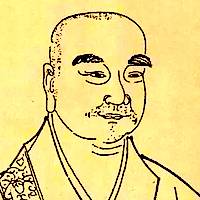
Yòngjiā Xuānjué 永嘉玄覺 (Yung-chia Ta-shih; Yōka Genkaku; "The Overnight Guest")
665 – 713 CE
Called “the Overnight Guest" because of proving his realization to Huineng in just one night, Yongjia is best remembered because of his writings, especially the Song of Enlightenment or Song of Freedom (Shodoka 證道歌) still popular in contemporary Western Zen circles and memorized by students in Asia. It emphasizes practice over study and the contrast between dharma nature and buddha nature. Yongjia is famous for not having a teacher but realizing enlightenment from only reading and contemplating the Sutras.

Han Shan (Cold Mountain)
c. 730-850 CE
Claimed by Buddhists as a Buddhist, by Taoists as a Taoist; Han Shan poked fun at both and living beyond any narrow categories like these, through his poems communicated a universal wisdom and truth. Not attached or attracted to honor and gain, he laughed at offered high positions and wealth. The favorite poet of everyone from Wang Anshi (1021-1086), one of China’s most famous prime ministers to Jack Kerouac who in 1958 dedicated his book Dharma Bums to him, Han Shan’s poems express complete spontaneity, total indifference to praise and blame, and continual realization of pure consciousness in the simple, ordinary details of life.
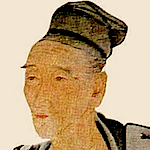
Layman Pang 龐居士
740 – 808 CE
Layman Pang 龐居士 Páng Jūshì, Hōkoji (740–808)
Successful merchant, family man, celebrated lay Buddhist; like Vimalakīrti and Marpa the translator, Pang exemplifies possibilities of the highest realization and enlightenment for people in everyday walks of life without needing to live in a monastery or remote cave, without being a yogi, monk, or nun. He did however worry about his success and wealth becoming an impediment to his spiritual path and at one point loaded all his riches in a boat that he sunk in a river. He and his family then traveled around China visiting great teachers and surviving by making and selling bamboo utensils. These travels and his words were immortalized in Blue Cliff Record koans as was his daughter Ling Zhao’s words, "Neither difficult nor easy, on the hundred grass tips, the great Masters' meaning" and "Not difficult, not easy—eating when hungry, sleeping when tired."
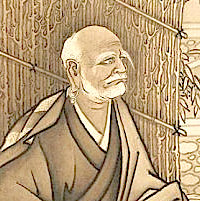
Nansen, Nanquan Puyuan 南泉普願
749 – 835 CE
Nansen, Nanquan Puyuan 南泉普願 Nánquán Pǔyuàn (749 – 835)
Tang Dynasty Chán master and inspiration for the “Golden Age of Chan;” Nansen, after 30 years meditating in a mountain retreat, came back to the world of people becoming a famous teacher and a key figure in many illuminating Zen anecdotes. Renowned for untangling the deep truth caught and hidden in the net of words, his direct communication and activity with students (including Joshu, Zhàozhōu Cōngshěn) directly provoked many enlightenment experiences. His koans appear in The Gateless Gate, The Blue Cliff Record, and The Book of Serenity.
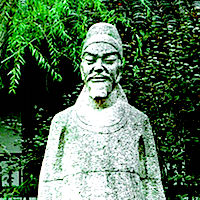
Liú Yǔxī 刘禹锡
772 – 842 CE
"Mad old man poet," politician, and philosopher
Poet, philosopher, writer; Liu Yuxi grew up in the political chaos of the time and transitioned from tutor to an heir apparent, secretary to a military governor, a high political post of Investigating Censor, to friend of many literary giants of the Tang Dynasty. He was banished, recalled, banished again because of a satirical poem, then made a provincial governor, and later governor of Suzhou. Along with famous poet/governor Bai Juyi he was known as one of the “two mad old men.” His poetry became some of the most famous throughout China, the other East Asian countries, and now—through insightful translations like Red Pine’s—in the West as well.
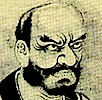
Rinzai Gigen 臨済義玄 (Línjì Yìxuán)
? - 866 CE
Student of Huangbo Xiyun, iconoclastic founder of a major Chán Buddhist school and one of the Five Houses of Zen, Rinzai; Gigen or Linji fiercely challenged students who accepted the superficial, conceptual meaning of buddhist teachings rather than penetrating the true meaning deeper than the words to find genuine wisdom and understanding. A book of his sayings recorded by one of his students, The Record of Rinzai (Zen Teachings of Rinzai), became one of the main texts for the Rinzai school as well as a big influence on buddhism and the evolution of consciousness in general. Known for his uncompromising approach to teaching that included yelling at and hitting his students, he directly continued the Buddha’s flower-sermon styleof non-conceptual teaching.
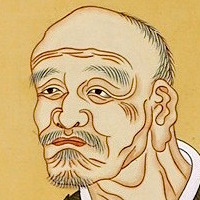
Hui Hai 大珠慧海
788 – 831 CE
Hui Hai 大珠慧海 Baizhang Huaihai (788 - 831)
Tang dynasty Chinese Chan monk, and author of the still-influential book, Essential Gate for Entry Into Sudden Enlightenment; Hui Hai became known as the “Great Pearl” because his teacher Ma-tsu Tao-i was so impressed when he read this book he praised it as “a great pearl, perfect and bright illumination that penetrates everywhere without impediment. Teacher to the famous Huangbo Xiyun, he established a set of rules for Chan monasteries still used today as well as architectural and lifestyle forms. Some of these included farming and self-sufficiency skills that enabled the Zen monasteries to survive during times of persecution and the influential saying, "A day without work is a day without food" (一日不做一日不食 "One day not work, one day not eat"). Ta-chu Hui-hai

Huating Decheng 華亭德誠
820 – 858 CE
After intense study with Chan Master Yaoshan Weiyan, Decheng moved to Hua Ting and lived on a small boat. He semi-anonymously stayed in the background and passed as a very ordinary person. As an occupation, he took people across a river while—with discrete subtlety—teaching them his Chan Buddhist understanding. In a famous story, he triggered a student's enlightenment by pushing him off the boat into the river. After the students realization, Dechenbg told him not to think about him anymore and fell off the boat into the water liberating the student from the golden chains of hero-worshipping delusion.
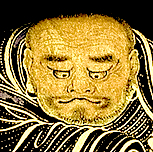
Huangbo Xiyun 黄檗希运 (Huangbo Xiyun, Huángbò Xīyùn, Obaku)
? - 850 CE
An uncompromising and fierce teacher, Huángbò often hit and shouted at his students including a future emperor of China. Though according to the Blue Cliff Record he was seven feet tall, very little is known about his personal life — unsurprising given his uncompromising disregard for conceptual thinking, his focus on egolessness and One Mind. Once when he told his students that in all of China there are no teachers of Zen, a student asked him how he could say that since he was teaching them. Huángbò answered, “I didn’t say there was no Zen, just no teachers.”
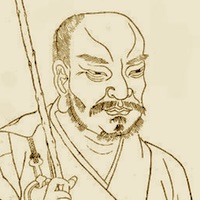
Yunmen Wenyan 雲門文偃 (Ummon Daishi, Yúnmén Wényǎn)
862 – 949 CE
The most eloquent Chan master
One of the most famous Zen masters in later day Japan, Ummon founded one of the five major Chán schools in China. This school compiled and wrote the Blue Cliff Record, flourished for hundreds of years, and continues today. Supported by the region's king, and famous throughout China and Korea, Ummon rejected the fame and many offered honors while building a new monastery in a more remote location. Many of his recorded statements later became koans—5 listed in The Gateless Gate, 8 in the Book of Equanimity, and 18 in the Blue Cliff Record.
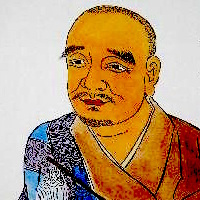
Touzi Yiqing 投子義青 (Tōsu Gisei, “Zen Master of Complete Compassion”)
1032 – 1083 CE
Said to have left his family when only 7 years old to study Buddhism, Touzi came to to the realization that a reliance on words to teach the ultimate truth would always be bound to fail. First leaving one then another tradition, he finally settled into the early Caodong/Soto Zen school and became the dharma heir although he had never met or studied with the previous lineage holder, Dayang Jingxuan. This broke the common practice of direct teacher-to-student transmission and further communicated the depth beneath the words, the heart of understanding under superficial beliefs.
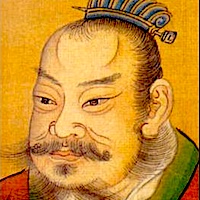
Su Shi 苏轼 (Dongpo, Su Tungpo)
1037 – 1101 CE
"pre-eminent personality of 11th century China"
Writer, statesman, poet, painter, calligrapher, pharmacologist, and important political figure; Su Shi wrote some of his time's most well-known poems and prose as well as essays on topics from travel to the iron industry. An exceptional and highly honored scholar, while serving in the Hangzhou government, he constructed the famous pedestrian causeway across West Lake. His poems got him into political trouble leading to two long exiles and imprisonment; but also, they brought him a fame that spread to many other countries and continues today. His poems on Buddhist topics became an important influence on Dōgen, founder of the Zen Sōtō school.
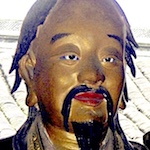
Yuanwu Keqin 圜悟克勤 (Yuánwù Kèqín)
1063 – 1135 CE
Author of the most famous Zen book, The Blue Cliff Record, Yuanwu became a renowned spokesperson for the non-thought lineages teaching a broad, open approach to religion beyond sectarianism, dogma, emotion and ritual that he saw as enemies to true understanding and realization. He left his Confucian family for a Buddhist monastery at a time when Confucianism, Buddhism, and Taoism were mingling and rejuvenating each other. His influence helped the spreading of this powerful force throughout the country and culture.

Hóngzhì Zhēngjué 宏智正覺 (Shōgaku)
1091 – 1157 CE
A highly prolific literary giant, Hongzhi taught “silent illumination,” shikan taza (just sitting), a return to our original nature without gaining ideas, letting go of conditioning in completely relaxed awareness, and a return to the world. These teaching became a root influence on the beginnings of the Soto Zen school. He was abbot of the Tiantong Monastery where later Eihei Dogen studied. Dogan brought these teachings to Japan extensively quoting Hongzhi describing him as an “Ancient Buddha.”
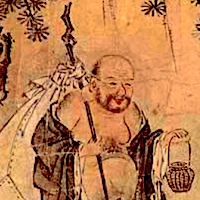
Kakuan Shien 廓庵師遠 (Kuo-an Shih-yuan, Kuòān Shīyuǎn )
1100 – 1200 CE
Most popular Ten Bulls artist/poet
Chan Buddhist monk, artist, and poet; Kakuan expanded on an old Taoist story that used an ox and herding as symbols for the spiritual path. He added two new pictures to a previous version that had 8 and published his new verses and pictures in c, 1178. These new additions emphasized returning to the world and linking closely realization with everyday life. Dramatically symbolizing the path to enlightenment, his rendition became the most popular then and continues to hold that position today in spite of many newer attempts. Exemplifying the close connection between Taoism and Zen, his Ten Bulls became closely identified with Zen in general as well as a continual source of inspiration for students.
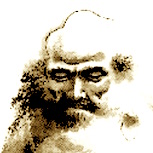
Mumon Ekai 無門慧開 (Wumen Huikai)
1183 – 1260 CE
Pioneering pathfinder to the Gateless Gate
Epitome of the Chan/Zen master, Lay Monk, and famous koan collector/commentator; Mumon wandered homeless with long hair and beard in old and dirty robes for many years working in the temple fields. Emphasizing the importance of "Great Doubt,” he taught that enlightenment is “just a matter of rousing the mass of doubt throughout your body, day and night, and never letting up." His koan compilation, The Gateless Gate has stopped the “word-drunkenness” of countless students through the centuries and still inspires and points out a a true but “gateless” path.

Dōgen Zenji 道元禅師
1200 – 1253 CE
Illegitimate son of a Japanese noble, Dōgen became a famous poet, writer, philosopher, and founder of the Sōtō school of Zen. Dissatisfied with the spiritual materialism of Buddhist teaching and teachers in Japan, he traveled to China seeking a more authentic Way. After training there for many years he returned, taught a meditation practice called zazen, and wrote the first Japanese monastic code. His deep understanding and powerful use of language helped bring realization to many and continues today.
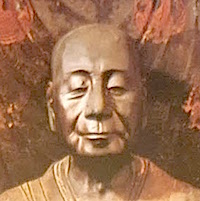
Mujū Dōkyō 無住道曉 (Ichien Dōkyō )
1227 – 1312 CE
”The Non-Dweller”
Champion of diversity and pluralism, Mujū Dōkyō appreciated and practiced many traditions only disapproving of intolerance, secularism, and all kinds of chauvinism. Mainly considered in the Rinzai tradition, he also studied Tendai, Pure Land, Hosso, Shingon, and Ritusu and criticized all forms of fundamentalism and teachers who denounced practices other than the ones they taught themselves. He wrote the Shasekishū (Sand and Pebbles), Zen anecdotes and stories immortalized by Paul Reps in Zen Flesh, Zen Bones.
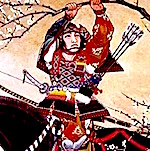
Hojo Tokimune 北条 時宗
1251 – 1284 CE
Hojo Tokimune, Hōjō 北条 時宗 (1251 – 1284)
Mainly responsible for the spread of Zen Buddhism in Japan and ruler during the time Kublai Khan was invading and trying to conquer; Hojo Tokimune as the 8th Shogun and with the help of typhoons repelled two Mongol invasions. (The second included 4,400 ships and over 140,000 troops.) He personally planned and led the defense and in the process established a new warrior class called samurai which became one of the most fierce fighting forces the world has ever known. He brought famous teachers from China, built temples, and funded the transplanting and translation of Chinese Chan Buddhism into Japanese Zen. Although dying when only 33 years old, his influence on Japanese politics and culture ran deep and still continues.
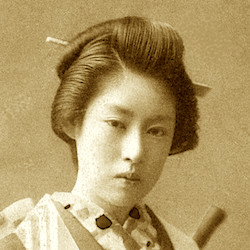
Kakusan Shido
1252 – 1305 CE
Kakusan Shido, Horiuchi (1252 - 1305)
During a time when men could easily divorce their wives but it was almost impossible for women and knowing personally how often women were used as pawns in male wars and revenge killings, Shido established Tokeiji 松岡山東慶寺 - a Rinzai Zen convent and the first used to shelter women.
Shido’s husband was the ruler known for repelling Kublai Khan’s Mongol invasion, spreading Zen Buddhism, and establishing the Samurai tradition. When he died, her dealing with the political intrigue led to this inspiration and the refuge called the “Divorce Temple.” It operated for over 600 years, sheltered runaway wives, gave them counseling and legal help. After helping two daughters of emperors, an emperor gave this extraterritorial rights. This empowered it to officially help divorcées and greatly increased its ability to help women in need.
During just the Tokugawa period, 2,000 women were sheltered and Zen luminaries like Reginald Horace Blyth, and D.T. Suzuki are buried there.
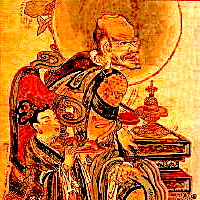
Yoshida Kenkō 兼好
1284 – 1350 CE
Inspiration of self-reinvention
After a life working as an officer of the guards in the Imperial palace, Kenko became a monk and one of the most famous authors of his era. His speculations on universal themes like beauty, nature, impermanence, and friendship found a deep resonance of feeling during his own time, one that continued fresh through the time since, and one remains part of Japanese school curriculum today. A paragon demonstrating the ever-present possibilities of re-inventing ourselves, Kenko’s transformation from a menial worker into an insightful sage became an inspiration in itself, beyond the wisdom in his essays and poems themselves.

Bassui Tokushō 抜隊 得勝
1327 – 1387 CE
Meditation master without distraction
A student of Sōtō and Rinzai as well as Ch'an schools, Bassui criticized the state of practice and realization during his time. He thought most teachers and students either tilted either too far toward understanding only the words or too far toward only trying to understand the sense; either too much emphasis on dogma and form or too much on freedom and spontaneity. Personally, he refused to wear robes or engage in the traditional rituals and focused on meditation practice itself. He preferred solitude and lonely hermitages; but, because of his clear realization, large numbers of students continually followed and sought him out.
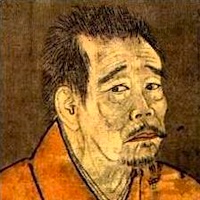
Ikkyū Sōjun 休宗純
1394 – 1481 CE
Famous trickster, flute player, and bringer of Zen awareness into everyday life
Folk hero, poet, Rinzai heretic and saint, eccentric Zen monk, and one of Japan's most famous flute players; Ikkyū's unconventional approach to Buddhism became a significant influence in popularizing Zen teachings to the general population. A Trickster, he rejected and criticized the religious establishment's hierarchy as well as the popular formalities, rituals, and societal norms of his time. Known as a great calligrapher and sumi-e artist, he also evolved and popularized the Japanese tea ceremony. His teachings emphasized direct, experiential, spontaneous understanding and he took a strong position against celibacy. Going further, he even taught that love and sex furthered people on a spiritual path and he encouraged sex with prostitutes, and either heterosexual or homosexual lovers. A continuous influence on Japanese culture, the popular TV series about him ran for 296 episodes.
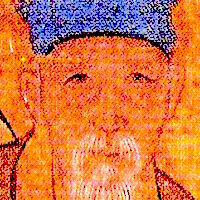
Chén Jìrú 陳繼儒
1558 – 1639 CE
Collector and publisher of rare books, powerful influence on Chinese culture and taste during the 16th century, Chen’s influence continues today. His book, Tea Talks (茶董補) written in 1595 is still popular and quoted in Japan, China, and here now. Creator of the Yixing-style purple clay teapots, his innovations in pottery, painting, literature, and calligraphy continue. Instead of taking the familiar path of respected literati and entering politics, Chen burnt his scholar robes as a symbol of rejecting that path and as a launching into a solitary lifestyle immersed in Buddhism and Taoism. Originator of the famous crane soaring among clouds image, he wrote an autobiography that included his imaginary death.
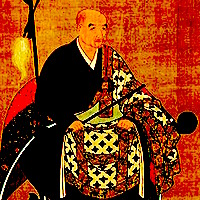
Bunan 至道無難 (Shido Bunan Zenji Munan)
1603 – 1676 CE
When young and known as the “Kana-writing boy” because of his skills, Bunan started practicing Zen and became a married innkeeper but also an addicted gambler and alcoholic. A chance encounter with a teacher, Gudo led to a radical life change, his enlightenment, and a recognition of the corruption that had entered the Rinzai Zen tradition. He became a famous poet, the teacher of Shoju Etan, teacher to Hakuin who revitalized Japanese Zen, and started many of the modern lines of Zen masters. Bunan eschewed fame and fortune, conventionality, rules, and following the words of the teaching rather than the sense.
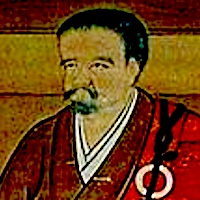
Bankei Yōtaku 盤珪永琢
1622 – 1693 CE
Zen Master of the unborn
Along with Dogen and Hakuin, one of the most influential Zen masters, Bankei developed a description of realization he called "Unborn Zen." D. T. Suzuki thought this one one of the most important and original descriptions in all the history of Zen. A rebellious child always getting into trouble, his early studies with Confucian and Buddhist scholars led to frustration for both Bankei and his teachers, to him getting expelled from his family home and having to live in a neighbor's tiny hut. He practiced so long and so hard that his health deteriorated to an extent causing his doctor to predict an imminent death. Healed by his realization however, he lived another 48 years. Refusing a high status position in his monastery, he worked in the kitchen and later lived alone in the mountains.
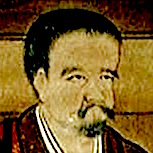
Bankei 盤珪永琢 (Bankei Yōtaku)
1622 – 1693 CE
Along with Dogen and Hakuin, one of the most influential Japanese Zen masters, Bankei developed a teaching he called “Unborn Zen” - a refinement D. T. Suzuki called “one of the most original developments in the entire history of Zen thought.” As a student, Bankei traveled widely, studied Confucian texts, practiced
Shin Buddhism, studied with many famous scholars, became a monk, but remained unsatisfied. Seriously ill and with a fatal prognosis, a near-death experience led to his enlightenment and return to health. Refusing a senior position in his monastery, he instead worked in the kitchen and then moved to the mountains living as a hermit and developing his teaching of seeing into the true nature of existence.
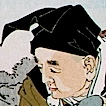
Matsuo Bashō 松尾 芭蕉
1644 – 1694 CE
The most famous poet of the Edo period in Japan and still internationally renowned and recognized as the greatest master of haiku, Bashō left his samurai status, urban fame and fortune to wander throughout Japan writing poetry. During periods of history in Japan, criticizing his poetry was considered blasphemous and many of his poems are reproduced on monuments. Some scholars believe he invented haiku and his verse greatly influenced Ezra Pound, the Imagists, and Beat Generation poets.

Hakuin Ekaku 白隠 慧鶴
1686 – 1769 CE
A monk at just 15, Hakuin soon became dissatisfied with the teachings available, left the monastery, began wandering and met a Taoist hermit, Hakuyu. One of the most influential figures in the Zen tradition, Hakuin included teachings from many different traditions and brought these to the illiterate. Although not beginning to paint until almost 60, he’s now recognized as one of the greatest Zen painters with works displayed in some of the world's leading museums. In a famous story, when unjustly accused of fathering a child and also when the mother later confessed to the lie and the child was taken away from him, his only comment was “Is that so?”
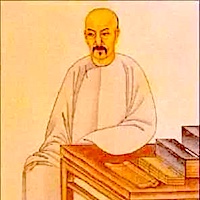
Zhang Xuecheng 章学诚 章学诚 (Chang Hsüeh-ch'eng)
1738 – 1801 CE
A famous historian, philosopher, and writer who was mainly unknown during his lifetime dying in poverty with few friends; Zhang Xuecheng's fame only began almost 100 years after he died. A revolutionary thinker, he crossed the status quo view that Confucianism is based on timeless principles and described it as an evolving set of realizations deepening as it faced and explained contemporary changes. He condemned self-serving partisanship, encouraged diversity, and individuation. A true advocate for the words over the sense, he emphasized the need to transcend language rather than becoming a slave to concepts. His focus on China's difficult struggle to blend the strong Taoist, Buddhist, and Confucian traditions into what's called now neo-Confucianism; has a powerful relevance to our own time of intense cultural, political, and religious amalgamation.

Ryokan 良寛大愚 (Ryōkan Taigu,“The Great Fool”)
1758 – 1758 CE
One of the most popular personalities in all of Japanese history, neither priest or lay person, “unthinkably kind” but strict practitioner, saturated with enlightenment yet calling himself “The Great Fool;” Ryōkan was a scholar, calligrapher, and poet yet spent his time with ordinary people. He took no disciples, gave no sermons, took no positions, and spent his time begging, playing with village children, writing and speaking some of the East’s best poems that bridge the gap between understanding the words and understanding the sense. Non-sectarian, a critic of institutional power and professionalism, and startlingly honest, today Ryōkan is a true Japanese national hero familiar to almost every child and respected by young and old, rich and poor, powerful and humble.
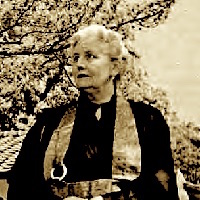
Ruth Fuller Sasaki
1892 – 1967 CE
First foreigner to become a priest in a Japanese Rinzai Zen temple, only woman yet to be a Daitoku-ji temple priest, and pioneering welcomer of Buddhism into the USA; Sasaki was an early student of yoga and Eastern philosophy during the 1920’s. She translated herself and—supervising a team including Gary Snyder—initiated many of the first translations of important Zen texts into English. Student of D. T. Suzuki, mother-in-law to Alan Watts, married to Zen master Sokei-an; she created places for people to practice, provided texts, and helped open the door for most of the early American Zen practitioners.
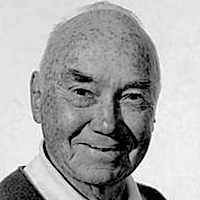
Paul Reps
1895 – 1990 CE
Author, artist, and early Western haiku poet; Paul Reps became a major welcoming influence for Zen coming to America
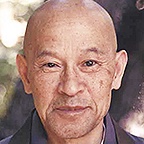
Shunryu Suzuki Roshi
1904 – 1971 CE
In completely in harmony with Lao Tzu, Suzuki Roshi’s teachings, possibly more than almost anyone else – and without saying so – brought a clear understanding of the Tao Te Ching into our modern world. In Japan, he had to deal with the rigidity and aggressiveness of his war time country. He came to San Francisco in 1959 and flourished during the height of the counter-culture influencing poets, artists, religious leaders (like Alan Watts and Chogyam Trungpa), and founded the first Zen Buddhist monastery in the West.
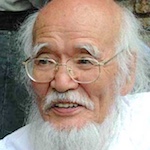
Masanobu Fukuoka 福岡 正信
1913 – 2008 CE
Farmer and philosopher, giant in the development of organic farming, sustainable development, guerrilla gardening and permaculture; Fukuoka founded “No-Till Natural Farming.” Trained as a microbiologist and agricultural scientist, he challenged Western agricultural practices both on his farms, in worldwide lectures, and in his books applying Taoist approaches like non-intervention and “Do-Nothing farming.” He worked with the UN to combat desertification, helped the Green Gulch Zen Center and Lundberg Family Farms, did projects in Africa, India, the Far East, Europe and South America. A deep observer of nature, he went beyond farming techniques to inspiring the natural food and natural lifestyle movements.
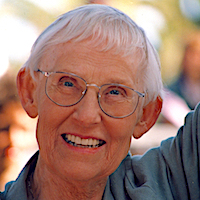
Charlotte Joko Beck
1917 – 2011 CE
Authentic, pioneering Western Zen master
Piano teacher, secretary, mother of four, and one of the first Western Zen teachers; Charlotte Joko Beck didn't begin Buddhist practice until her 40's but it quickly became her life. Her first teacher was Taizan Maezumi Roshi but she left him amid scandals involved with him sleeping with students. She also studied with Hakuun Yasutani and Soen Nakagawa. She emphasized the synergy between Buddhism and psychology as well as the practical, emotional reality of our lives. She stopped shaving her head and wearing robes, and helped American Zen evolve beyond the walls of Japanese culture.

Seungsahn 숭산행원대선사 (Soen Sa Nim)
1927 – 2004 CE
Laundromat repairman, 78th Korean Zen Patriarch, ”Great Lineage Master,” Korean army captain, founder of the international Kwan Um School of Zen; Seungsahn founded many Zen centers in the USA, in Israel, and—with Mikhail Gorbachev’s invitation—one also in the Soviet Union. A member of the underground resistance during the Japanese occupation of Japan, he was caught, imprisoned and almost executed. This led to a 100 day retreat living on a diet of pine needles and rain water and his transition to dharma teaching. Teaching in the West without attachment to a particular form or school, he taught the appreciation of “don’t-know mind” and improvised different practices for different students. this improvisation may have gone a little too far though when—still posing as a celibate monk—he had many affairs with female students. When discovered, he did repentance ceremonies making it seem unlikely that these actions were just more teachings.

Toni Packer
1927 – 2013 CE
A Zen teacher minus the 'Zen' and minus the 'teacher.’
Toni Packer (1927 – 2013)
Dropped-out successor to famous Zen teacher Phillip Kapleau, developer of the "meditative inquiry" practice, and founder of the Springwater Center; Toni Packer grew up in Nazi Germany needing to hide her Jewish heritage while becoming increasingly skeptical of authority. Following in the Krishnamurti lineage of spiritual anti-authoritarianism, she stopped calling herself a “Buddhist” and became "...a Zen teacher minus the 'Zen' and minus the 'teacher.’ ” Exiled from the Rochester Zen Center, she taught finding the essence, the sense, the true meaning hidden by dogma, rituals, organized religions and cultural traditions.
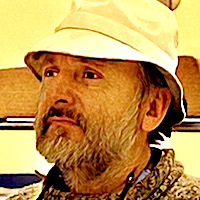
Robert M. Pirsig
1928 – 2017 CE
American philosopher, modern-day Thoreau-on-wheels, 170 IQ precocious child, and high school graduate at only 14 years old; Pirsig experienced a difficult and troubled life. He was expelled from college, had a nervous breakdown, spent time in psychiatric hospitals, was diagnosed with paranoid schizophrenia and was treated with electroshock therapy. His wife divorced him and his 22-year-old son was stabbed and killed. In spite of (or because of) these challenges, he was awarded a Guggenheim Fellowship, given an honorary doctorate degree, and wrote a book called “brilliant beyond belief,” “a cornerstone of the Beat/Hippie literary era," and that was compared to the writings of Dostoevsky, Proust, and Melville. Unseduced by fame, he intentionally led a quite, contemplative life outside the limelight.

Gesshin Myoko Roshi
1931 – 1999 CE
Moon heart miraculous light
Rinzai Zen master as a girl known by Adolf Hitler who thought she was the perfect Aryan but whose family escaped to California; Gesshin Myoko (moon heart miraculous light) studied and taught Japanese and Vietnamese Zen. Painter, poet, calligrapher, and mystic from an early age; she led a life filled with spontaneous intuition and insight that led to meeting Sasaki Rōshi, becoming his disciple, helping him start thriving Zen centers, and becoming the head teacher. She later felt this approach was too severe and not appropriate for western students and developed her own Zen forms not tied to a particular culture, tradition or time period; but instead, connected with the particular students and environment involved.
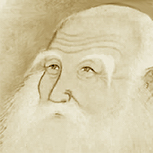
Shan Dao 山道
1933 CE –
Translator, entrepreneur, farmer, engineer, inventor, house-holder, and single father; Shan Dao grew up in a remote but culturally diverse village. Alienated from the materialism and militarism of his environment, he was drawn toward a spiritual path and at 4 years old began experiencing at first a mystical Christianity and later one more in harmony with Doestoevesky and Teilhard de Chardin. He practiced at first Rinzai and later Soto Zen, Tibetan Vajrayana Buddhism, and a Rimé Shambhala tradition which led to an immersion in the Tao Te Ching and the deep wisdom streams hidden but flowing in our many different religious cultures.
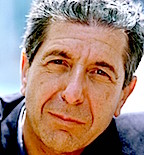
Leonard Cohen
1934 – 2016 CE
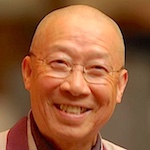
Jakusho Kwong
1935 CE –
Art teacher, postman, sign painter, Sonoma State University professor, and one of the first students of Shunryu Suzuki and Chogyam Trungpa; Kwong received official recognition as a Zen teacher from the Soto School in Japan and with his wife and dharma partner, Laura (Shinko) founded Sonoma Mountain Zen Center where they raised 4 sons and brought genuine Zen understanding to numerous students. After giving Richard Baker Dharma transmission the previous year, Suzuki Roshi’s was preparing the same for Kwong Roshi when he died in 1971.
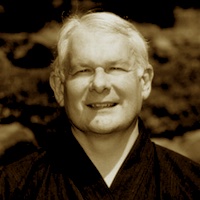
John Stevens
1947 CE –
Zen scholar, Aikido master, and author of many books on Eastern philosophy, John Stevens came up with his own Aikido system which he teaches all over the world.
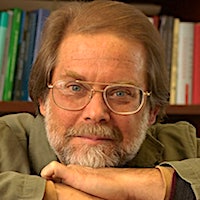
David Loy
1947 CE –
Zen teacher, philosopher, and ecological activist; David Loy studied with Yamada-roshi and Robert Aitken-roshi, completed a formal koan practice in 1988, and taught at Singapore University, Bunkyo University in Japan, and Xavier University in Ohio. With a focus on encouraging individual spiritual practice to extend to and help solve social and ecological problems, he lectures internationally, teaches workshops, and leads meditation retreats.
Related Sources (8 sources)
Zen Mind, Beginner's Mind by Shunryu Suzuki Roshi
The Gateless Gate, 無門関, 無門關 by Mumon Ekai
Crooked Cucumber: the Life and Zen Teaching of Shunryu Suzuki by David Chadwick
Zen Flesh, Zen Bones by Paul Reps
Zen Teachings of Rinzai (Record of Rinzai), Irmgard Schloegl translation 1976 by Rinzai Gigen
Ordinary Wonder by Charlotte Joko Beck
Quotes about the Zen Lineage (12 quotes)

“A special teaching, without scriptures, beyond words and letters, pointing to the mind-essence of man, seeing directly into one’s nature, attaining enlightenment.”
Comments: Click to comment

“Zen has no gates. The purpose of Buddha's words is to enlighten others. Therefore Zen should be gateless... When one passes through this gateless gate, they walk freely between heaven and earth.”
Comments: Click to comment
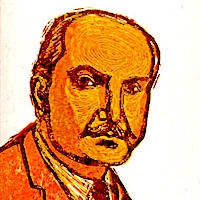
“Christianity persecuted, tortured, and burned. Like a hound it tracked the very scent of heresy. It kindled wars and nursed furious hatred and ambitions. Like Islam, it sanctified extermination and tyranny. All this would have been impossible if, like Buddhism, it had looked only to peace and the liberation of souls.”
Comments: Click to comment
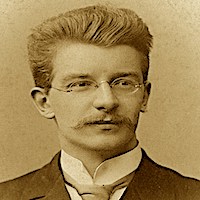
“Herein lies a difference between Buddhism and Taoism. In Buddhism, this return to Nirvana is connected with a complete annihilation of the ego, which, like the world, is only illusion. In Taoism, the goal is to preserve in a transfigured form, the idea of the person, the 'traces' left by experience. That is the Light symbolized in our text by the Golden Flower.”
Comments: Click to comment
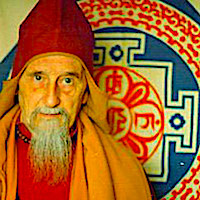
“Chan or Zen—one of the most attractive schools of Buddhism which has drawn the attention of the world to the importance of meditation and spiritual awakening—is an amalgam of Taoism and Buddhism in China.”
Comments: Click to comment

“Meditation has become quite popular lately, but where it involves mental concentration, I consider this a form of brainwashing that is, if anything, a dangerous road. Zen, I believe is oriented toward escape from the world of ideas. It is foolish to be tied down to things such as the soul and malevolent apparitions that don't exist at all.”
Comments: Click to comment
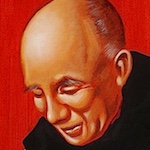
“There is no question that the kind of thought and culture represented by Chuang Tzu was what transformed highly speculative Indian Buddhism into the humorous, iconoclastic, and totally practical kind of Buddhism what was to flourish in China and in Japan in the various schools of Zen.”
Comments: Click to comment
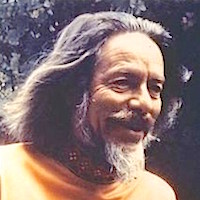
“one of the most precious gifts of Asia to the world, the origins of Zen are as much Taoist as Buddhist... a way and a view of life which does not belong to any of the formal categories of modern Western thought... Zen may be regarded as the fulfillment of long traditions of Indian and Chinese culture”
Comments: Click to comment
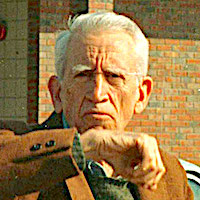
“Zen is rapidly becoming a rather smutty, cultish word...Pure Zen, need I add—will be here even after snobs like me have departed.”
Comments: Click to comment

“To Chinese Buddhists the Tao was synonymous with the One Mind or Pure Consciousness which they held to be not only the impersonal creator, but the very substance (or rather ‘non-substance’) of the entire universe.”
Comments: Click to comment
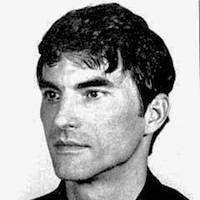
“In its pristine sense, the meaning of following the Tao, later called Taoism or wayfaring, included the whole spectrum of the search for knowledge... the schools of learning that retained the most comprehensive range of interest general came to be known as Taoist... [It] was used as a primary source for terms and concepts through which Buddhism could be explained to the Chinese.”
Comments: Click to comment
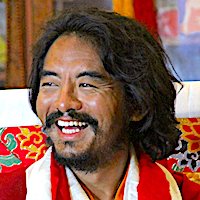
“Buddha became Buddha because he recognized that everything is a dream, including himself.”
Comments: Click to comment
Comments (0)